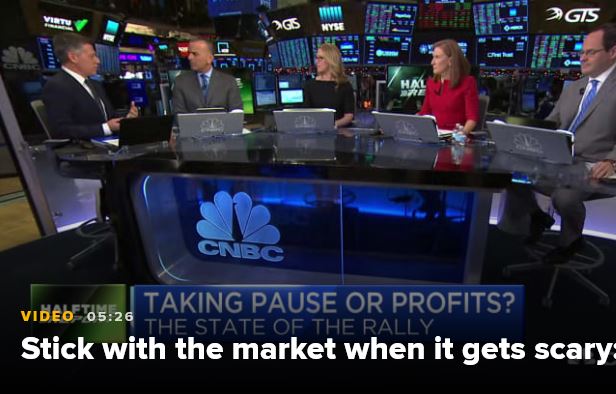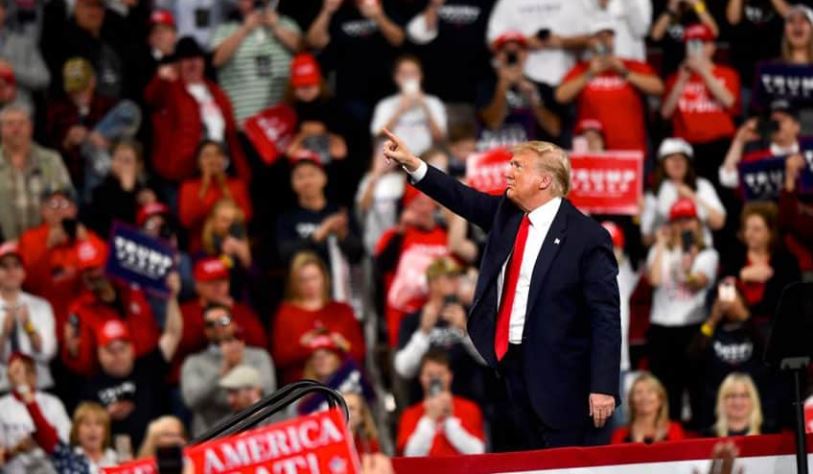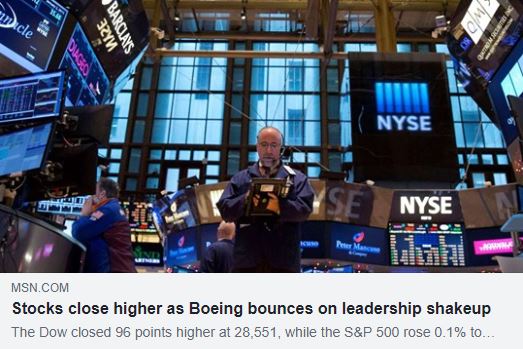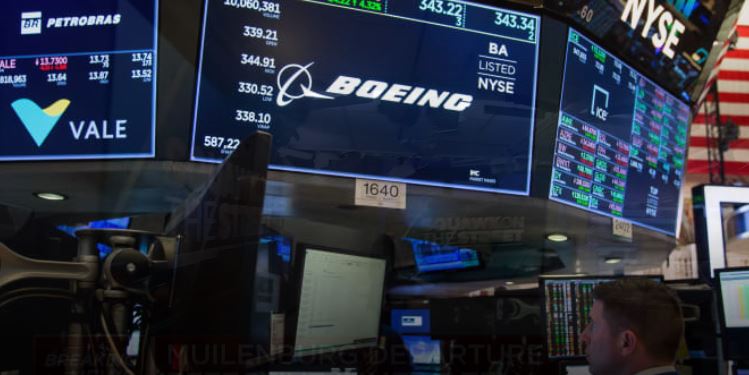Tag Archive for: stock market
Posts
Melt Up
/in Investing/by Tom EssayeWhat’s in Today’s Report:
- Year-End Melt Up: Why Stocks Are Rallying Off Recycled Headlines
- Weekly Jobless Claims: Retracing the Thanksgiving Spike
Futures are modestly higher yet again following another quiet night of news as the melt-up continues into year-end.
Chinese Industrial Profits rose 5.4% in November, the first gain in three months, and this headline is mostly responsible for the gain in futures this morning.
Other economic data was mixed, as Japanese Industrial Production (-0.9% vs. (E) -1.4%) and Unemployment (2.2% vs. (E) 2.4%) beat estimates, while Retail Sales slightly missed (-2.1% vs. (E) -1.7%).
Today there are no notable economic reports nor any Fed speakers, and if should be a generally quiet day.
Tom Essaye Quoted in Hannity.com on December 26, 2019
/in Investing/by Customer Service“Stocks are grinding relentlessly higher into year-end on continued momentum from the positive resolution of four key events: A phase one trade deal…” Tom Essaye, founder of Sevens Report, said Monday. Click here to read the full article.
Tom Essaye Quoted in International Business Times on December 23, 2019
/in Investing/by Customer Service“Stocks are grinding relentlessly higher into year-end on continued momentum from the positive resolution of four key events: A phase one trade deal, a dovish Fed…” Tom Essaye, founder of Sevens Report, said Monday. Click here to read the full article.
Tom Essaye Quoted in Seeking Alpha on December 23, 2019
/in Investing/by Customer Service“Stocks are grinding relentlessly higher into year-end on continued momentum from the positive resolution of four key events: A phase one trade deal…” says Sevens Report founder Tom Essaye. Click here to read the full article.
Tom Essaye Quoted in MSN Money on December 24, 2019
/in Investing/by Customer Service“Stocks are grinding relentlessly higher into year-end on continued momentum from the positive resolution of four key events: A phase one trade deal…” Tom Essaye, the founder of Sevens Report, said in a note. Click here to read the full article.
What a Difference a Year Can Make
/in Investing/by Customer ServiceWhat’s in Today’s Report:
- What A Difference a Year Can Make: December 26th 2018 vs. December 26th 2019
Futures are marginally higher following a good report on retail sales by Mastercard. Trading is quiet, however, as most of Europe, Hong Kong and Australia are closed for Boxing Day.
Mastercard (MA) posted preliminary estimates for 2019 holiday spending and they appear stronger than expectations, and that’s helping send futures higher.
There was no “Christmas surprise” from North Korea although a missile launch is still expected in the coming days (but even if it happens, it shouldn’t impact markets much).
The only notable number out today is Jobless Claims (E: 223K), and we’ll want to see the continued unwind of the Thanksgiving spike higher in claims that occurred two weeks ago.
Time to Buy Defense Stocks?
/in Investing/by Tom EssayeWhat’s in Today’s Report:
- Was that the Bottom in Boeing? (Time to Buy Defense Stocks?)
- Durable Goods Takeaways (Not as Bad as It Appeared)
U.S. stock futures are marginally higher this morning while international markets were little changed overnight as news wires were very quiet and attendance is notably thin ahead of the Christmas holiday.
There were no economic reports overnight and no market-moving headlines have crossed since yesterday’s close.
Looking into today’s holiday-shortened session (the NYSE will close at 1:00 p.m. ET), there are no notable economic releases and no Fed officials are scheduled to speak.
The only potential market catalyst on the calendar is a 5-Yr Note Auction by the Treasury at 10:00 a.m. ET. Any significant moves in the belly of the yield curve could affect stocks today as computer trading will dominate the price action due to the low attendance ahead of Christmas.
What’s Driving the Melt Up (And How Long Can It Last?)
/in Investing/by Tom EssayeWhat’s in Today’s Report:
- What’s Driving the Melt Up, And How Long Can It Last?
- Weekly Market Preview
- Weekly Economic Cheat Sheet – The Big Number of the Week Is Today
Futures are slightly higher thanks mostly to momentum from last week’s rally as the weekend was a quiet one.
On trade, the WSJ reported China has reduced additional tariffs on some goods, but this is all part of the existing phase one deal and it’s not an incremental positive.
Economic data was sparse overnight, and none of the numbers are moving markets.
Today we get the most important economic report of the week, New Orders for Non-Defense Capital Goods ex-Aircraft (E: 0.0%), which is a proxy for business spending – something that should start to rise now that we have a phase one trade deal. As has been the case, the stronger this number, the better for stocks.
Beyond today, this week would have been a quiet one even if there wasn’t a holiday, but it should be even more so as the economic calendar is very sparse. Geo-politically, North Korea could launch a missile or test a nuclear bomb this week, but while it might cause temporary volatility, that won’t derail this rally. So, as long as there are no negative trade surprises, the path of least resistance for stocks remains higher into year-end.





